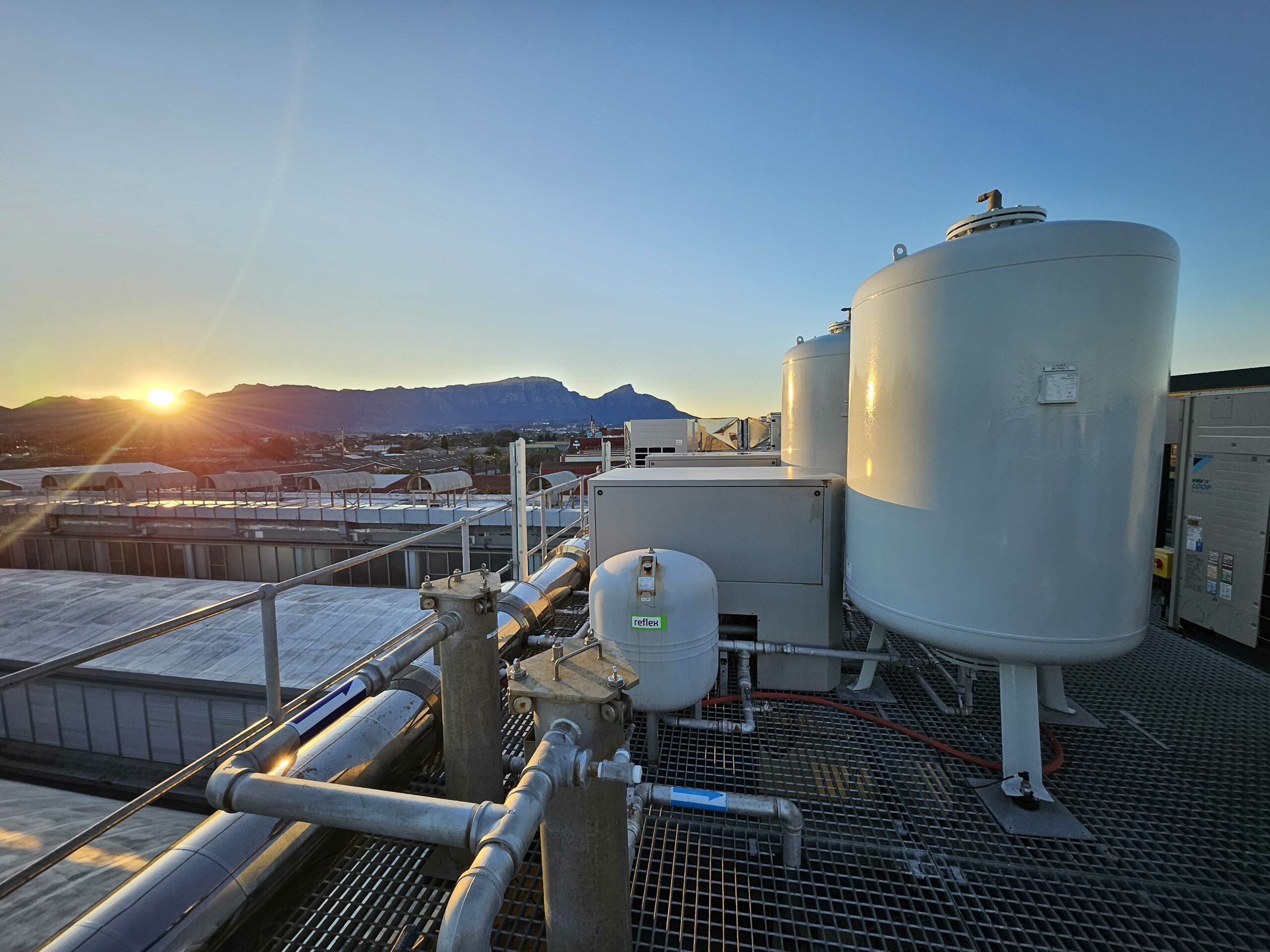Africa News
Africa Data Centres
boosts Cape Town capacity
Three new state-of-the-art halls take ADC’s Plumstead campus to 6MW, double the current IT load.
Share
- Click to share on X (Opens in new window) X
- Click to share on Facebook (Opens in new window) Facebook
- Click to share on LinkedIn (Opens in new window) LinkedIn
- Click to email a link to a friend (Opens in new window) Email
- Click to share on Reddit (Opens in new window) Reddit
- Click to share on WhatsApp (Opens in new window) WhatsApp
- Click to share on Pinterest (Opens in new window) Pinterest
Cape Town has received a massive boost in data centre capacity with a state-of-the-art upgrade to the Africa Data Centres CPT1 facility.
The data centre giant, part of pan-African technology group Cassava Technologies, has added three new state-of-the-art halls in new areas on its Plumstead campus. With 6MW of IT load, it doubles current capacity. The new expansion was implemented with support from the United States International Development Finance Corporation (DFC), which has provided Africa Data Centres with a loan of up to $300-million.
“This expansion by Africa Data Centres is in response to the increasing demand for co-location capacity in South Africa,” says Hardy Pemhiwa, president and group CEO of Cassava. “Not only is Cape Town the second largest economy in South Africa, but it is also the de facto software and technology hub in Southern Africa.”
He says the company is seeing tremendous growth in the data centre market in South Africa generally, as both national and international cloud and IT service providers seek to expand their footprints in the region.
The expansion adds 1000 racks of white space or the space available for customers to lease, although the physical site is significantly larger than that. It is made up of two more colocation data halls and one hyperscale hall.
The additional halls are built in the cutting-edge modular design pioneered by Africa Data Centres, which enables rapid scalability and a modern design that allows the facility to be populated as and when required to suit the needs of the customer.
Pemhiwa says this would not have been possible without the support of the Ministry of ICT in the Western Cape Provincial Government and the Western Cape Department of Economic Development.
The new halls feature cutting-edge security standards and focus on important elements like scalability, flexibility, and energy efficiency. It is highly flexible and designed to accommodate different and evolving customer demands.

White room ready for massive client capacity at the Africa Data Centres CPT1 facility in Cape Town. Photo: ARTHUR GOLDSTUCK
The data centre boasts hybrid cooling technology capable of handling both air cooling and liquid cooling. It is powered by renewable energy, boasts a Water Usage Effectiveness of 0 due to no water consumption for the IT infrastructure, and has an impressive Power Usage Effectiveness rating as well.
The Africa Data Centres’ CPT1 facility is at the forefront of pioneering the use of wheeled solar power in the market. This innovation is enabled through a 20-year Power Purchase Agreement (PPA) signed in March last year with Distributed Power Africa, part of the Cassava Technologies group.
Finhai Munzara, interim CEO of Africa Data Centres, says: “The introduction of wheeled solar power at the CPT1 facility offers significant benefits to our’ customers, providing a truly sustainable data centre solution. As the demand for data continues to skyrocket across Africa, a continent where power supply is often intermittent, the need for reliable, cost-effective, and green power has never been more critical.”
By harnessing renewable energy, he says, the CPT1 facility not only ensures consistent power supply but also supports sustainable operations, helping customers achieve their environmental goals.
“Our state-of-the-art facility reduces reliance on non-renewable energy sources, setting a new standard for sustainability in the data centre industry.”
Munzara says Cape Town is an excellent location for colocation facilities as it is a stone’s throw away from all the submarine cable landing stations. The Cape Town facility houses the Cape Town Internet Exchange (CINX), which makes multi-region peering more accessible, efficient, and easy to manage. This also facilitates direct connections between networks, enabling data to flow more efficiently and reducing latency, giving our users a faster, more responsive online experience.
Share
- Click to share on X (Opens in new window) X
- Click to share on Facebook (Opens in new window) Facebook
- Click to share on LinkedIn (Opens in new window) LinkedIn
- Click to email a link to a friend (Opens in new window) Email
- Click to share on Reddit (Opens in new window) Reddit
- Click to share on WhatsApp (Opens in new window) WhatsApp
- Click to share on Pinterest (Opens in new window) Pinterest
| Thank you for Signing Up |



















